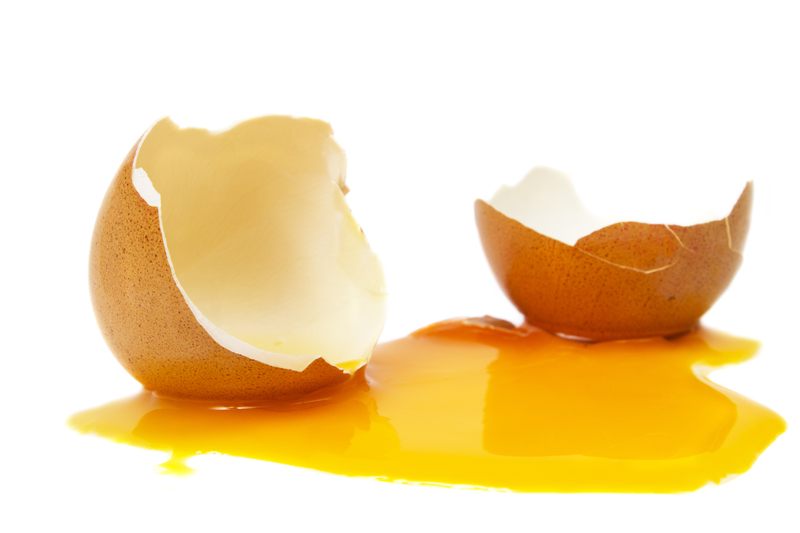Polish Your Car to Perfection with Expert Advice
Posted on 26/08/2025
Polish Your Car to Perfection with Expert Advice
Is your car lacking its former shine? Do you dream of restoring that mirror-like finish most new cars have? If so, you're in the right place. In this comprehensive guide, discover everything you need to know to polish your car to perfection, with professional-level results. From choosing the right products to expert tips and techniques, you'll learn how to make your car's surface gleam -- and keep it looking its best for years to come.

Why Polishing Your Car Matters
Over time, your car's paintwork faces numerous threats: ultraviolet rays, road salt, rain, dirt, and even improper washing can leave unsightly swirls, minor scratches, and dull patches. Polishing your car doesn't just enhance its appearance; it also protects the paintwork. By removing surface imperfections, you create a smooth, reflective finish that looks incredible and helps preserve the value of your vehicle.
Key Benefits of Car Polishing
- Restores Shine: Removes oxidation, stains, and dullness, restoring showroom-like gloss.
- Removes Minor Scratches: Polishing minimizes swirl marks and light scratches for a smoother finish.
- Prepares for Protection: Creates an ideal surface for waxing or sealing, enhancing durability.
- Long-Term Paint Health: Eliminates harmful contaminants, preventing further paint deterioration.
- Boosts Resale Value: A well-maintained, glossy exterior increases your car's market appeal.
Understanding the Car Polishing Process
Before you begin, it's essential to understand what car polishing involves. Car polishing is the process of using abrasive compounds and mechanical or hand applicators to level and smooth your vehicle's clear coat -- the top layer of the paint.
During this process, a tiny amount of the clear coat is removed to eliminate imperfections like swirl marks, water spots, scratches, and oxidation, resulting in a brighter, more reflective surface.
The Difference Between Polishing, Buffing, and Waxing
- Polishing: Uses abrasives to smooth paint, removing minor imperfections.
- Buffing: Typically refers to the mechanical action used to apply polish or compounds.
- Waxing: Adds a protective, hydrophobic layer over polished paint. Waxing does not correct defects.
Getting Ready: What You Need for Flawless Car Polishing
Before you start to perfect your car's finish, assemble the right tools and materials. Investing in quality products ensures better results and protects your vehicle's paint.
Essential Supplies for Car Polish Perfection
- Car Wash Soap and Buckets: To start with a clean surface.
- Microfiber Wash Mitt and Towels: For gentle, scratch-free cleaning and drying.
- Clay Bar Kit: Removes embedded contaminants before polishing.
- Car Polish/Compound: Choose a polish or compound suitable for your car's paintwork and level of defect correction needed.
- Dual Action (DA) Polisher or Rotary Polisher: For best, efficient results. Hand polishing works for light work but is more labor-intensive.
- Polishing Pads: Foam or microfiber, matched to your polisher and product.
- Painters Tape: To mask off plastic trim, badges, and sensitive areas.
- Detailing Lights: So you can accurately monitor your progress and finish.
- Protective Gloves and Eye Wear: For safety during the process.
Recommended Car Polish Variations
- Cutting Compounds: For heavy oxidation and deep scratches. These are more abrasive and typically used in the first step.
- Medium Polishes: Good for moderate swirls and blemishes.
- Finishing Polishes: Light abrasives that enhance gloss after heavier polishes are used.
Step-by-Step Guide to Polish Your Car to Perfection
Ready to restore your car's dazzling shine? Follow these professional steps to polish your car to perfection and achieve that stunning, glossy appearance.
1. Wash and Decontaminate Thoroughly
- Start with a Pre-Rinse: Use a hose or pressure washer to remove loose dirt and grime.
- Two-Bucket Wash: Use one bucket for soapy water and another for rinsing your mitt to avoid scratching.
- Clay Bar Treatment: After drying, rub a lubricated clay bar across your paint to remove embedded contaminants the wash didn't catch.
Tip: Never skip the decontamination step, as leftover grit can cause scratches during polishing.
2. Inspect and Tape Off Sensitive Areas
- Work in good lighting and inspect the paint for deep scratches or problem areas.
- Use automotive masking tape to protect rubber seals, plastic trim, and badges.
3. Select the Right Polish and Pad
- For deeper imperfections, use a more aggressive compound and pad.
- For maintenance or lightly marred paint, opt for a finishing polish and soft foam pad.
4. Apply Polish Using Optimal Technique
-
Machine Polishing:
- Place a small amount of polish on the pad.
- Spread on a small panel before activating the polisher.
- Start at low speed to spread the product, then increase speed to work the polish in overlapping passes.
- Apply light to medium pressure, letting the machine and polish do the work.
-
Hand Polishing:
- Use a foam or microfiber applicator pad and apply with overlapping, circular motions.
*Expert Advice:* Let the polish break down fully before wiping. Watch for a clear finish or the product becoming translucent.
5. Wipe and Inspect
- Remove residue with a clean, soft microfiber towel.
- Check your progress under strong lights and re-polish any areas as needed.
6. Repeat (If Necessary) and Refine Finish
- In some cases, you may need multiple stages: start with a cutting compound, then re-polish with a finer product for maximum gloss.
7. Protect Your Work
- Once the surface glows, apply a high-quality wax, synthetic sealant, or ceramic coating to preserve your results and enhance protection.
Expert Tips for Perfect Car Polishing
- Work in the Shade or Indoors: Direct sunlight can dry polish too quickly and cause streaks.
- Keep Your Pads Clean: Clogged pads reduce effectiveness. Swap or clean pads frequently.
- Check Polish Compatibility: Match polishes and pads to your car's paint hardness and defect level.
- Avoid Excessive Pressure: Too much force can burn the paint or leave holograms.
- Patience Pays Off: Work in small sections for even results.
- Go Easy on Edges: Be gentle on sharp creases, where the clear coat is thinner.
Common Mistakes When Polishing Your Car
- Skipping Surface Preparation: Proper washing and decontaminating are vital.
- Incorrect Pad and Polish Selection: Using overly aggressive combinations can thin or damage the clear coat.
- Working Too Fast: Rushing leads to uneven finish and missed spots.
- Overloading Pads: Too much product causes splatter and reduces cut.
- Neglecting Protection After Polishing: Always seal your work to keep the finish intact.
How Often Should You Polish Your Car?
Professional detailers recommend a thorough car polish once or twice a year for most vehicles. However, frequency depends on factors such as usage, paint condition, and storage. Over-polishing can remove too much clear coat, so it's best to polish only when needed.
Choosing the Right Car Polishing Products
Markets offer a vast range of polishes, compounds, waxes, and sealants. Here's how to choose the best options for your needs:
- Paint Condition: Heavily oxidized or scratched paint requires more aggressive products; newer finishes may only need a light polish.
- Type of Finish Desired: For deep gloss and reflection, use a jeweling polish as the final step.
- Paint Type: Some cars have "soft" paint (which scratches easily) while others have "hard" paint (requiring stronger compounds).
- Product Reviews: Read reviews from car enthusiasts and detailing professionals to find proven solutions.
Top Recommended Polishes and Tools for Enthusiasts
- Meguiar's Ultimate Compound: Excellent for removing oxidation and heavy swirl marks.
- Griot's Garage Complete Polish: Great for general correction and shine enhancement.
- Menzerna Finishing Polish: Perfect for achieving that "wet look" final step.
- Porter Cable 7424XP DA Polisher: Beginner-friendly, minimizes risk of paint damage.
- Lake Country Pads: Reliable foam and microfiber pads for all stages of polishing.
Advanced Tips: Achieving Professional-Level Polish
- Inspect with Panel Wipe: Use a gentle panel wipe (like isopropyl alcohol diluted with water) to remove all polishing oils before final inspection.
- Double or Triple Polishing: For show cars or dark paints, professionals may use two or three increasingly fine polish passes for unmatched depth and gloss.
- Infrared Curing: High-end detailers use infrared lights after coating to bond protection products to the paint, enhancing durability and shine.
- Use a Paint Thickness Gauge: Monitor clear coat thickness if you routinely correct heavy defects.

Caring for Your Car After Polishing
Now that you've achieved a flawless, polished car finish, protect and maintain it with these best practices:
- Wash Gently: Use a pH-neutral shampoo and soft mitt to avoid scratching.
- Use a Quick Detailer: Regularly boost gloss and remove light dust and fingerprints.
- Reapply Wax or Sealant: Maintain protection by topping up every few months.
- Store Indoors or Use a Car Cover: Limit exposure to the elements whenever possible.
Conclusion: Enjoy the Benefits of a Perfectly Polished Car
Learning how to polish your car to perfection isn't just about looks; it's about protecting your investment and driving with pride. With proper preparation, the right products, and expert techniques, anyone can transform a tired, dull finish into a dazzling, mirror-smooth surface.
Ready to restore your car's shine and turn heads wherever you go? Use this expert guide as your roadmap, and you'll master the art of car polishing in no time. Give your vehicle the professional finish it deserves -- and enjoy the satisfaction of a perfect polish, every drive!





